
Appalachia is a cultural region in the Eastern United States that stretches from the Southern Tier of New York State to northern Alabama and Georgia. While the Appalachian Mountains stretch from Belle Isle in Newfoundland and Labrador, Canada, to Cheaha Mountain in Alabama, Appalachia typically refers only to the cultural region of the central and southern portions of the range, from the Catskill Mountains of New York southwest to the Great Smoky Mountains of Tennessee and North Carolina. In 2019, the region was home to an estimated 25.7 million people, of which roughly 81% are white.
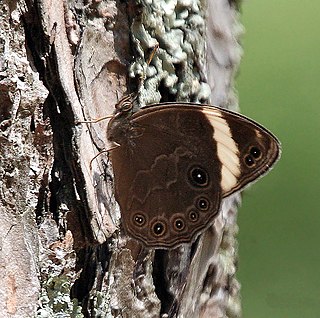
Lethe is a butterfly genus from the subfamily Satyrinae in the family Nymphalidae. The genus was erected by Jacob Hübner in 1819. It includes the treebrowns, woodbrowns, foresters and their relatives. The species in the genus Lethe occur in temperate-tropical southern and eastern Asia, up to Indonesia and in North America.

In the Appalachian Mountains of the eastern United States, balds are mountain summits or crests covered primarily by thick vegetation of native grasses or shrubs occurring in areas where heavy forest growth would be expected.

Enodia anthedon, the northern pearly-eye, is a butterfly species of the subfamily Satyrinae that occurs in North America, where it is found from central Saskatchewan and eastern Nebraska east to Nova Scotia, south to central Alabama and Mississippi.

Satyrodes eurydice, the eyed brown or marsh eyed brown, is a species of Satyrinae butterfly that is native to North America.
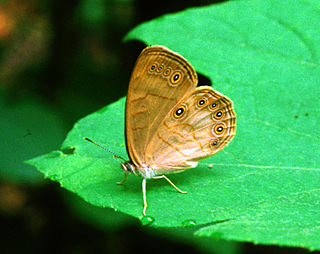
Satyrodes is a genus of Satyrinae butterflies that is native to North America.
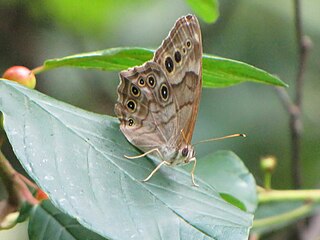
Enodia is a genus of butterflies of the subfamily Satyrinae in the family Nymphalidae.
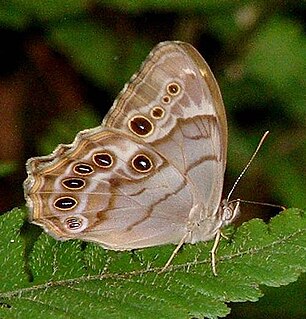
Enodia portlandia, the southern pearly eye, Portland pearlyeye or just pearly eye, is a butterfly of the family Nymphalidae. It is found in the United States from eastern Oklahoma and eastern Texas east through the southeast.

The Appalachian region and its people are mostly viewed negatively due to the "Appalachian Stereotype". According to Stuart Hall, a scholar of cultural studies, a stereotype can be described as using images, tools, and identity to understand why people make certain judgments. These are generalizations that people, especially those that live outside the region, have towards the place and its inhabitants. Historically, media sources have played a significant role in promoting these stereotypes. Due to this, the world outside the region largely views the Appalachian area as lawless, violent, and uneducated.
Westchester County, New York is located in southern New York, sharing its southern boundary with New York City and its northern border with Putnam County. It is bordered on the west side by the Hudson River and on the east side by the Long Island Sound and Fairfield County, Connecticut. The county has a total area of 500 square miles, of which 430 square miles is land and 69 square miles (14%) is water. It is an area rich in biodiversity with many parks and preserves. Literary environmental writer Alex Shoumatoff hailed Westchester County as the "most richly diversified deciduous forest in the world" in a 1978 The New Yorker profile, at the time estimating that it contained 4,200 species of plants.
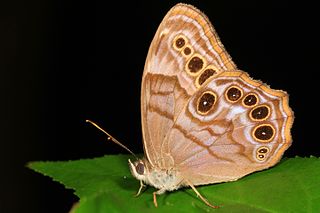
Lethe anthedon, the northern pearly-eye, is a species of butterfly in the family Nymphalidae. It is found in North America.

Lethe creola, the creole pearly-eye, is a species of brush-footed butterfly in the family Nymphalidae. It is found it the United States from North Carolina and central Georgia west to eastern Oklahoma and eastern Texas. Some authorities include this species in the genus Enodia as Enodia creola.

Lethe appalachia, known generally as the Appalachian brown or Appalachian eyed brown, is a species of brush-footed butterfly in the family Nymphalidae. It is found in North America.














